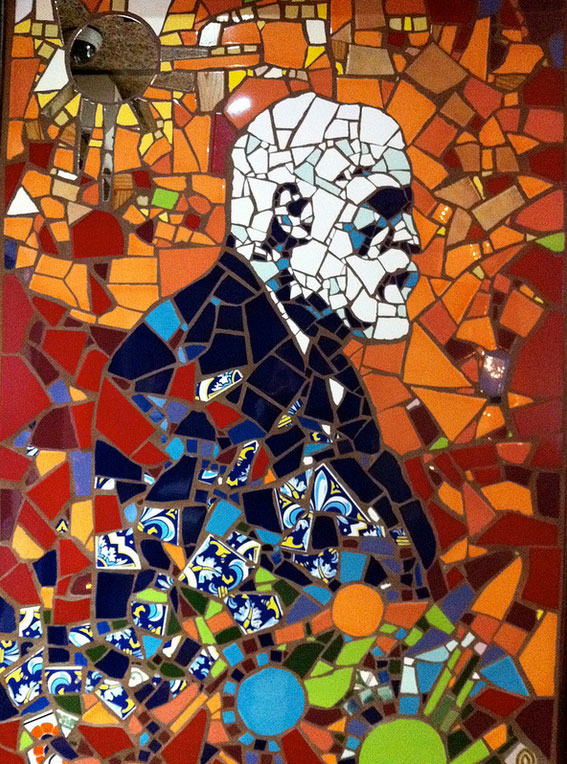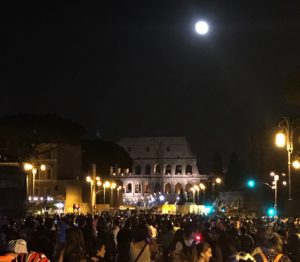first published at the group travel blog Your Life Is A Trip

“Aren’t you afraid?” and “Isn’t it dangerous?” These were the consistent questions posed by friends and family upon hearing I had booked a trip to Mexico. From my standpoint, it was a matter of avoiding winter’s cold, pursuing Spanish language studies and visiting American friends in San Miguel de Allende, a picturesque colonial city located in Mexico’s central state of Guanajuato.
Without any fear I flew from Albuquerque to Leon-Guanajuato Airport, via Houston, avoiding any border violence issues, and a 90-minute shuttle bus ride delivered me to this established and renowned cultural enclave of ex-pats and snowbirds. But the question of danger and safety in Mexico is not an easy or simple one to answer.
There is violence in Mexico, as everywhere. I recall an Australian friend who, landing in L.A. for his first trip to the U.S., called to ask if he should buy a gun – a reasonable question given the FBI estimate of over 200 million privately-owned firearms.
Americans – with our recent history of internal terrorism (Oklahoma City), external terrorism (September 11th), intentional public shootings (Tucson supermarket), serial murderers, drive-by shootings, rapes and other domestic violence; with handgun murders a daily occurrence in U.S. cities, and the largest prison population in the world – are hardly in a position to point fingers at the dangers abroad.
However, there is something different happening in Mexico. At the core are not just anger, political intolerance, insanity and psychopathic behavior, but money and turf war power, with illegal drugs as the medium.
Thirty years ago, when I lived and traveled in Mexico for six months, handguns were illegal and even the police were gunless. At that time, Mexico was an extremely safe place in regard to violent crime. Corruption, usually in the form of bribes to officials, was a known, accepted and non-violent interaction. That was two generations ago and the world has changed in countless ways.
Like violence, drugs have always been a part of the human story. But it is economic policy that is driving the chaos and fear created by the narcotrafficantes, who are controlled by powerful drug lord families, or “organizations”. It is akin to the days of Prohibition and the likes of Al Capone. While most of the violence is between warring gangs, innocent people can get caught in the crossfire and, recently, it is believed that the first U.S. officials and their families have been targeted and murdered. But even this is not a complete picture of the spreading lawlessness that is gripping parts of Mexico.
An estimated 30,000 people have been killed in this drug-related violence since 2006; 6,000 in Ciudad Juarez alone. According to author and journalist Charles Bowden, “There is no serious War on Drugs. Rather, there is violence, nourished by the money to be made from drugs. And there are U.S. industries whose primary lifeblood comes from fighting a war on drugs.”
Fear begets fear and, with high employment and steeply rising prices of essential goods, it is understandable that many young men are drawn to the possibility of ensuring the well being of their families through enlisting in one army or another of this drug war. They have nothing else to do, nothing to lose, and there is the hope of money being made.
For the past few weeks, while comfortably residing in the friendly, culturally-rich enclave of San Miguel de Allende’s 10,000 ex-pats and snowbird visitors (in a city of about 80,000), I’ve tried to grasp the dangers and concerns, real or imagined. Here, long-time American and Canadian residents continue to feel safe from the drug war. The now regular cases of vandalism, assaults and robberies have engendered a greater degree of cautiousness and common sense measures but, overall, the smaller cities and villages in central Mexico have not seen evidence of drug war violence.
Clearly this is not the case along the border – Tijuana, Ciudad Juarez, Nuevo Laredo, Nogales, and Matamoros, in the states of Nuevo Leon, Guerrero, Sinaloa, Michoacan, and Durango. According to the U.S. State Department, “Other metropolitan areas have lower, but still serious, levels of crime. The low rates of apprehension and conviction of criminals also contribute to Mexico’s high crime rate… The Mexican government makes a considerable effort to protect U.S. citizens and other visitors traveling to major tourist destinations.”
Indeed, tourism is among Mexico’s top three economic generators, along with oil exports and Mexicans working abroad who send home billions of dollars each year to their families, although that has been diminishing with issues of legality and far fewer jobs abroad.
Mexico, the 11th largest economy in the world and about three times the size of Texas, is a vast and complex country, therefore lumping together all places is absurd. As a tourist to major destinations, you would not likely encounter any evidence of the drug wars, and such violence is primarily between the criminal elements. Like elsewhere in the world, most people are decent, law abiding and peaceful citizens who want nothing of this madness in their communities but are, for now, helpless to counteract the organized crime and violence.
For example, a young man living in San Miguel Allende told me that his parents, in Mexico’s wealthiest and second largest city of Monterrey, have increased security measures. They stopped going out at night, instead entertaining friends at home in their upper-middle class suburb. They, and many of their neighbors, have traded late-model SUVs for less conspicuous cars. Even so, there have been incidents of large trucks, commandeered by narcotrafficos, that block streets, ransack stores, sometimes take hostages for ransom, and otherwise terrorize residents.
As military efforts have resulted in nothing but escalated violence, the Mexican government is seriously considering decriminalization and legalization for marijuana. However, like many logical solutions, there are enormous economic and political factors at play and the future of such initiatives remains uncertain.
Is it safe to visit the resorts and popular tourists destinations, like Puerto Vallarta, Ixtapa, Playa del Carmen, San Miguel de Allende and Guanajuato? Probably as safe as it has ever been. The decent, kind-hearted Mexicans, who know the value of tourism, welcome you.
My advice? Avoid driving anywhere near the borders and never drive at night; stay in tourist-populated areas; do not count on police protection (I am told they can be targets themselves, or related to the bad guys); steer clear of any demonstrations or dubious situations; do not carry large sums of money and always have change in local currency for taxi rides and small purchases; be aware of your surroundings, as you should no matter where; and continue to visit and enjoy the diverse scenery, culture, food, climate and genuine hospitality of Mexico.
Aysha Griffin is a travel writer, editor and business/relationship coach. Her blog is: www.InhabitYourDreams.com.



